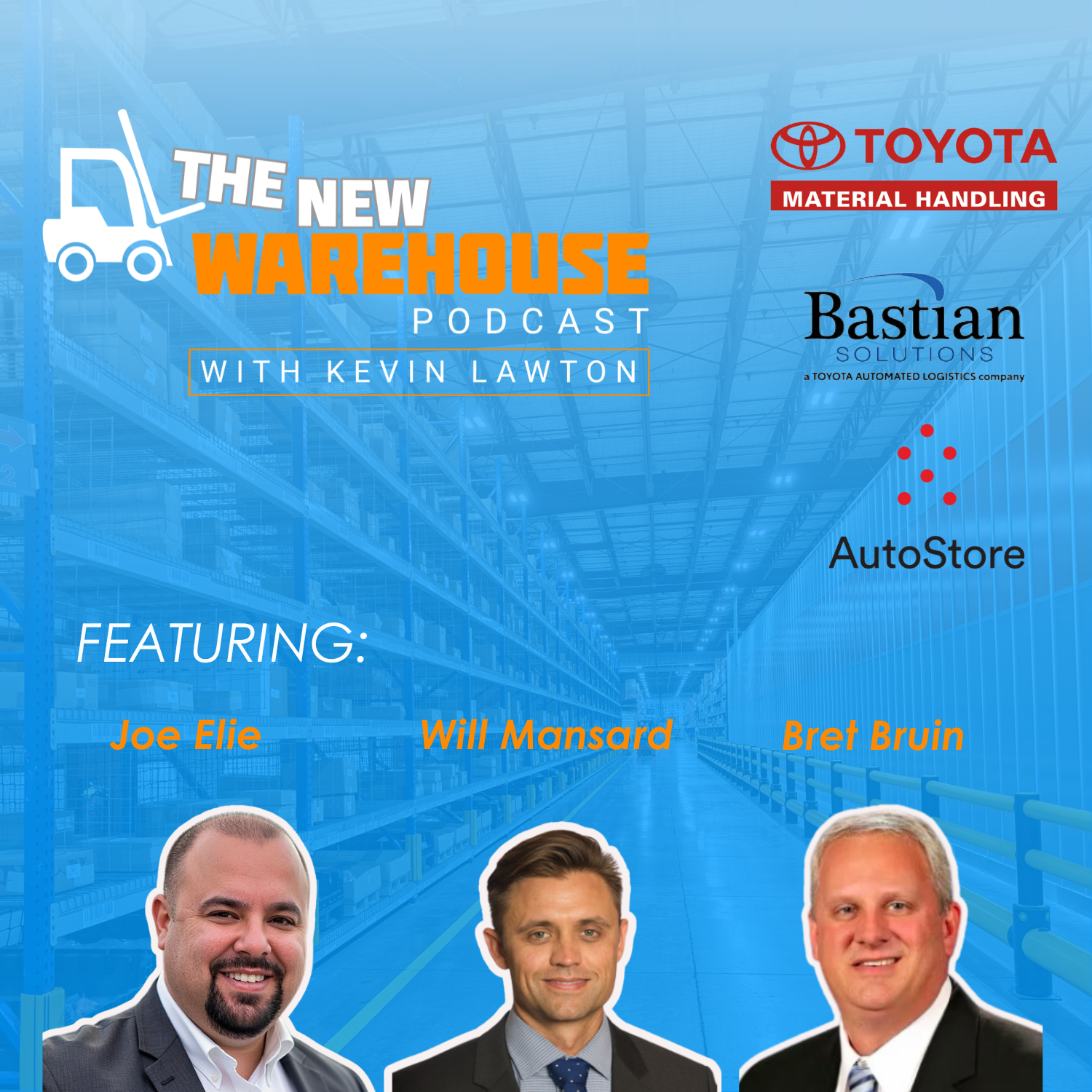
543: Toyota Material Handling’s Next-Gen Distribution Center
In this episode of The New Warehouse Podcast, Kevin visits Toyota Material Handling’s headquarters in Indiana to explore their cutting-edge parts distribution center. Brett Bruin, Vice President of Aftermarket & Advanced Services at Toyota Material Handling, discusses the implementation of Toyota’s new AutoStore solution. This transformative project focuses on automation, operational efficiency, and enhancing worker conditions, all while addressing industry challenges like space utilization and growing demand. Toyota’s approach highlights how automation can drive both productivity and employee satisfaction.
Transforming Distribution Center Operations with AutoStore
During the pandemic, Toyota faced unprecedented challenges, including increased demand and a growing SKU inventory. Their manual processes couldn’t keep pace, prompting the adoption of AutoStore technology. As Brett explained, “We started working with Bastion Solutions to identify the best solution for automating, and AutoStore was the clear choice.” By retrofitting its existing 172,000-square-foot facility, Toyota avoided operational shutdowns, showcasing its adaptability. “It’s like a restaurant remodeling the kitchen but staying open the entire time,” Brett remarked. The result? A streamlined system that improves space utilization and enhances order fulfillment.
Empowering Employees Through Change Management
One of Toyota’s priorities was ensuring that automation enriched employees experiences. Before AutoStore, warehouse associates walked up to 10 miles daily for manual picking—a grueling task now eliminated by automation. “Our goal was to do the same amount of work or more with less manpower but not to let anyone go,” Brett emphasized. Toyota retained all employees, reallocating them to new roles and investing in upskilling. By involving associates in project planning, they reduced skepticism and built trust. “We sought their input—because they’re the experts,” Brett added.
Laying the Foundation for Future Distribution Centers
Toyota’s investment in automation is just the beginning. Their phased strategy aims to achieve 98% next-day parts delivery by 2030. Phase two includes opening regional distribution centers, while phase three focuses on integrating dealer inventories into a unified system. “The future is really about being connected,” Brett explained. Leveraging AI and telemetry, Toyota plans to enhance predictive analytics and optimize inventory placement, ensuring faster delivery to customers. This forward-thinking approach positions Toyota as a leader in parts distribution.
Key Takeaways
- Toyota’s AutoStore implementation transformed its operations without disrupting ongoing activities.
- Automation reduced employee strain while retaining and upskilling the workforce.
- Toyota aims for 98% next-day delivery by 2030, supported by regional expansion and AI-driven inventory management.
Listen to the episode below and leave your thoughts in the comments.
Guest Information
For more information on Toyota Material Handling, click here.
To connect with Brett Bruin on LinkedIn, click here.
For more information about the future of the distribution center, check out the podcasts below.
539: Lightening the Load in Warehousing with Verve Motion
480: The Future of Safety in Warehousing with Powerfleet
540: Smart Robotics Aligns Human and Robotic Efforts in Warehousing




